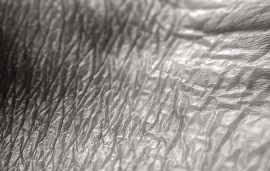As the temperatures start to drop outdoors, many of us will be spending more time inside using fireplaces and heating systems to stay cozy and warm. Unfortunately, while the air is warm inside, it is also likely to be dry. Cold air contains less moisture than warm air, as the humidity levels are lower. This means that when you bring drier air inside for heating, it will become strikingly dry.
The Adverse Effects of Dry Air:
There are several reasons why dry air can be detrimental. Dry air can affect your home, withering indoor plants, damaging wood furnishings and encouraging wallpaper to peel. You may also notice that there is an increase in static shocks, and your musical instruments lose tune.
The more noticeable effects of dry air are on your personal comfort. You are likely to find that your skin, lips, and hands feel drier and more prone to cracking. You may also notice that your eyes, throat and nasal passages feel irritated, and you have greater difficulty breathing, experiencing higher frequency of irritating coughs.
Creating Perfect Winter Air:
The goal in winter is to restore humidity levels back into your indoor air without compromising the temperature level. During winter, you are likely to continually turn up the thermostat to increase the warmth in the air. Unfortunately, this is not liable to create the perfect winter air as you need to also consider humidity. The key to home comfort and optimized energy efficiency can actually lie in restoring a comfortable humidity level.
Humidifiers can offer a practical and easy solution for this issue, allowing you to enjoy an environment that is not only warm and comfortable, but is at the ideal humidity level.
Types of Humidifier:
There are two basic types of humidifier; portable and centralized. Portable units tend to have the capacity to serve a single room or area. They typically consist of a tank that needs to be refilled with water over a particular period. This is usually every few hours or overnight. Most portable humidifiers have different settings to allow greater control of the humidifying power, but the basic principle is the same. The humidifier forms a light mist to introduce water into the air and restore the humidity level.
Central air humidifiers provide a larger solution, allowing you to treat your entire home. They attach to your central air system and allow the air to be humidified after it has been conditioned. This allows the humidified air to be distributed throughout the whole home. Centralized systems use a protected evaporator pad, fitted to the ductwork. This pad is filled with water, and as air passes over it, it absorbs the moisture. Most centralized humidifier systems require professional installation for effective and safe performance. Simply introducing water into your ductwork will not offer an effective humidifying effect and could introduce mold and other bacteria into the system. Centralized humidifiers use a protected pad to ensure that while the humidity level in the air is increased, it does not compromise the performance of your heating and ventilation system.
